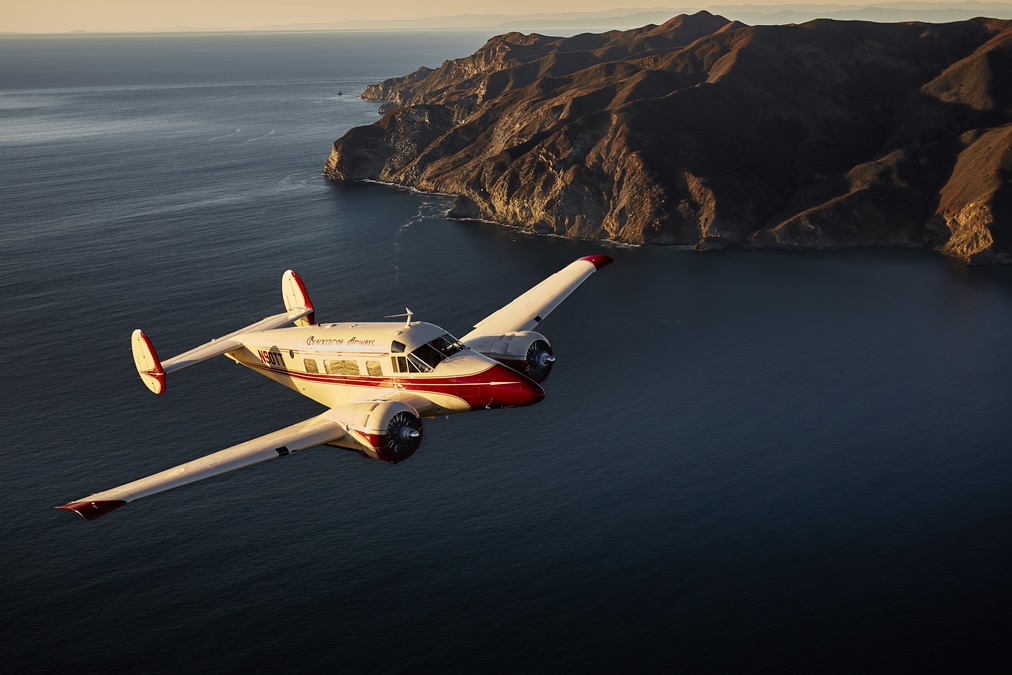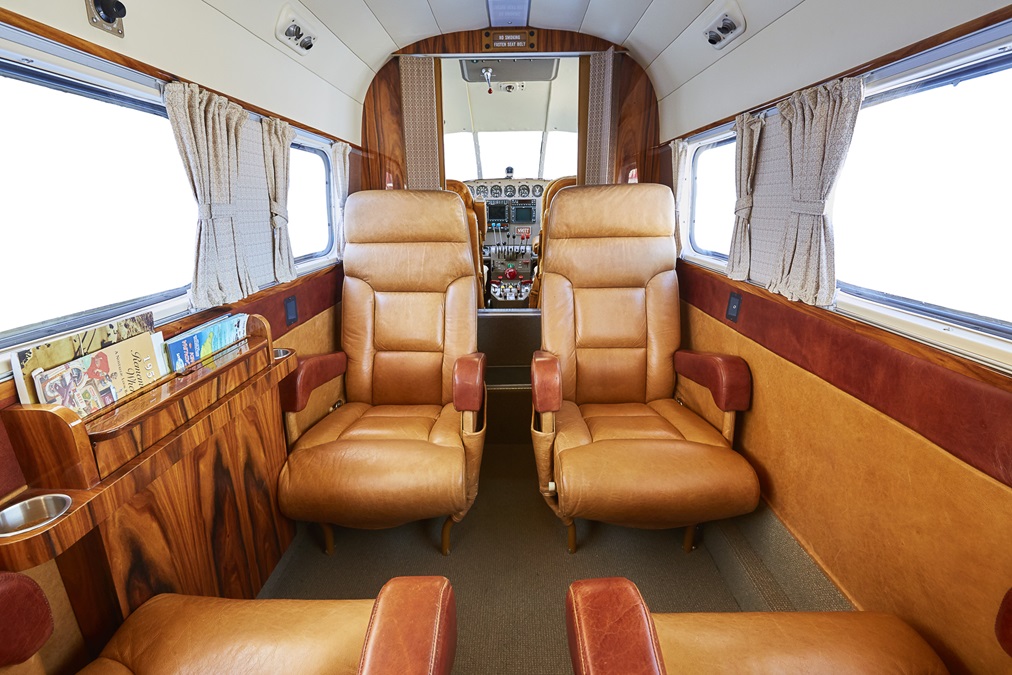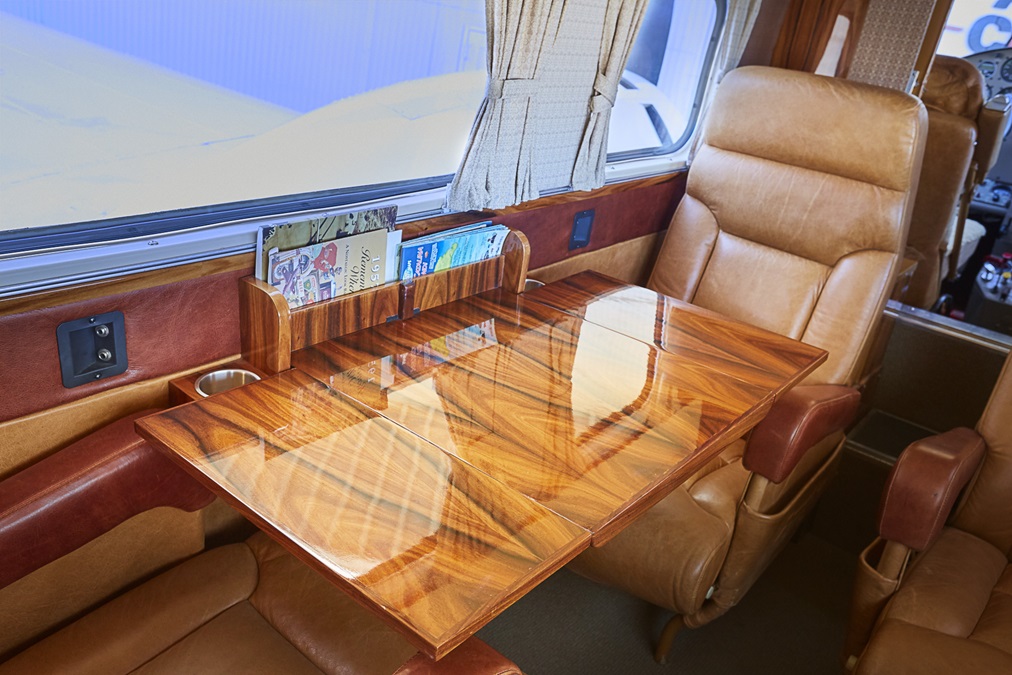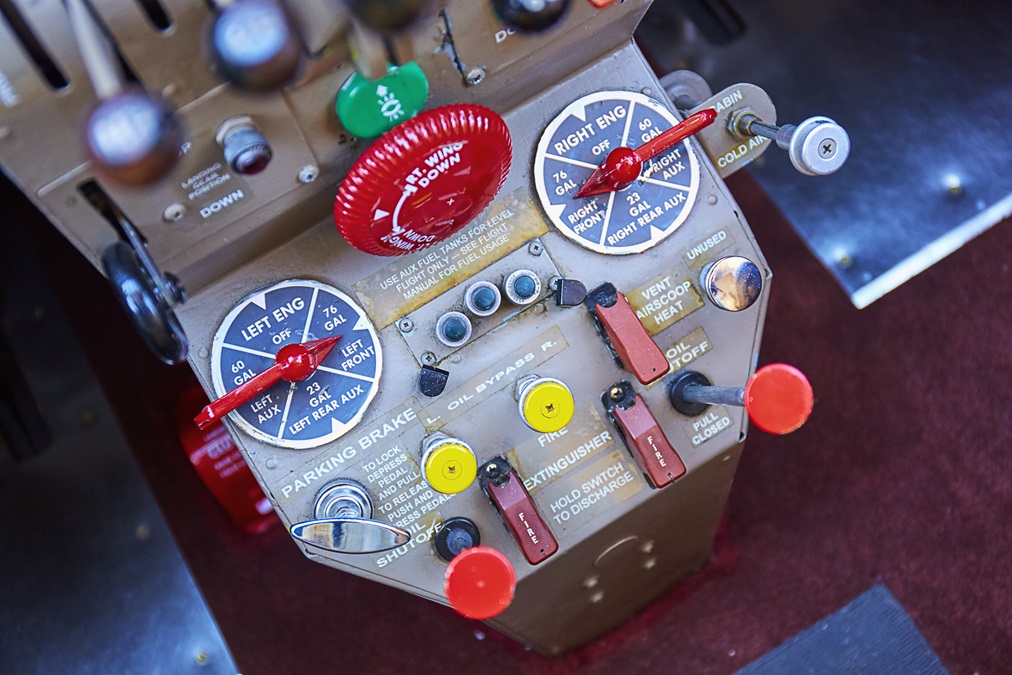Model 18 Twin Beech: Father's Day
An airplane for the ages
Michael “Maverick” Blackstone was a captain for American Airlines but was more widely known for his accomplishments in general aviation. During the mid-1980s he developed an ingenious tracking system that allowed pilots to practice dogfighting in light airplanes. “Shooting” at and “hitting” an “enemy” aircraft while maneuvering caused smoke to streak from the “damaged” airplane, thus providing an attacking pilot a very realistic sense of having shot down an airplane.
Air Combat USA uses eight Siai-Marchetti SF.260s that allow pilots from all over the world to come to Fullerton Airport in Southern California and play fighter pilot for a day. Blackstone’s son, Michael “Rocket” Blackstone, was raised in this environment and soloed one of the company “fighters” at age 16. At 19 he worked as a “combat pilot” for his father while attending college. Following in Maverick’s footsteps, he worked his way up the aviation ladder and in 1999 became the second Blackstone on the American Airlines seniority list. He flew on numerous occasions as his father’s first officer on Boeing 757s and 767s, and he is now a Boeing 737 captain.
The elder Blackstone was not happy about having to retire from the airline simply because the calendar said he was age 60. Father and son decided that they should start their own “airline,” a charter operation that would allow Maverick to chase the setting sun into old age and continue allowing the pair to share a cockpit together.
The duo had used a Waco biplane for sightseeing flights, but decided that their airline would need something more practical, an airplane that could be used to provide vintage yet luxurious transportation. They had briefly considered a DC–3, but Rocket says that “it was too big, too expensive, and beyond the scope of what we needed.” Father and son ultimately agreed that the legendary Model 18 Twin Beech would be perfect for sunset flights to romantic venues and adventurous getaways to distant destinations.
Most Twin Beeches, though, have seen their better days, and finding a good one was not easy. The pair eventually and luckily discovered for sale a 1957 Beech E18S that had been magnificently restored, beautified, and modified to the tune of a half-million dollars. They could not have asked for a better airplane.
The Blackstones purchased N90TT and picked it up in West Palm Beach, Florida, on Father’s Day in 2014. They flew it home together, father and son once again sharing the cockpit of an airliner, the inaugural flight of Blackstone Airways. The aircraft would charter people in style to such destinations as Napa Valley and Catalina Island. The Blackstones would be doing together what they loved to do most.
Six months later, however, fate dealt Maverick a cruel blow. He was diagnosed with cancer and died on August 19, 2015. Rocket took over the controls of Air Combat USA and continues to charter the Twin Beech in honor of his father’s memory. “Flying was our first love, and my goal is to do whatever I can to inspire other fathers and sons, mothers and daughters to pursue together their dreams of flight,” he says.
Modifications
N90TT likely is the most beautiful and luxurious Twin Beech available for charter anywhere in the world. The most obvious modification made to the airplane is the Volpar Mark IV tricycle landing-gear conversion. This was applied to 240 Twin Beeches before the system was purchased by Beech and used during the manufacture of 109 late-model airplanes.
The conversion includes reversing the positions of the main landing-gear legs in their wells so that instead of being forward and retracting aft, the legs are positioned aft and retract forward.
Many Model 18 taildraggers had been modified with a Geisse crosswind landing-gear system that also was used on many Cessna 180s and 190s. This allowed the airplane to make a wings-level crosswind landing while angled in a crab. On touchdown, the side force on the downwind wheel would cause it to caster an amount corresponding to the drift angle of the airplane (no more than 30 degrees), thus enabling the airplane to track along the runway in a crab. You could taxi the airplane in a crab, too. It was weird. This system was removed, however, when the aircraft was converted to tricycle gear. Crosswind landings were then made conventionally (touching down in a slip).
Performance and payload vary between different models and modifications of the Twin Beech. On a standard day, Blackstone’s E18S can take off over a 50-foot obstacle in 1,980 feet and climb at 1,410 fpm. Normal cruise at 10,000 feet varies from 153 knots (and 33 gallons per hour) to 186 knots (and 48 gph). If one is unconcerned about fuel economy, cruise speed can be increased to 203 knots while guzzling 90 gph. Maximum range (with a 45-minute reserve) at 10,000 feet is 1,378 nautical miles.
N90TT has six fuel tanks (one main and two auxiliary tanks per wing) that provide 318 gallons of usable fuel. The auxiliary tanks are used only in level flight. With a maximum-allowable gross weight of 9,600 pounds and an empty weight of 7,491 pounds, the airplane has a useful load of 2,109 pounds. The maximum zero-fuel weight of 9,060 pounds limits payload (people and baggage) to 1,569 pounds.
Twin Beech owners once had the option of installing a pair of small Aerojet-General solid-fuel rocket engines. This “Junior JATO” (jet-assisted takeoff) system was available for use in an emergency, such as an engine failure at liftoff, or whenever 700 pounds of additional thrust were needed to improve performance—but this burst of rocket power lasted for only 12 seconds.
Flying the Beech
Newcomers to the Twin Beech learn quickly that the power quadrant is unusual. The throttles are in the center, flanked on the left by propeller controls and on the right by mixture controls. (In most twins, throttles are on the left.) This makes it easy to inadvertently grab the propeller controls when your intent is to move the throttles.
This and almost all other Twin Beeches are powered by 450-horsepower Pratt & Whitney R-985 engines with integral superchargers. Wakening these nine-cylinder radials can be a two-handed process, but the experience is a joy to behold as they belch smoke and seemingly come to life one cylinder at a time. The popping and banging quickly settle into a confidence-building purr of power.
Taxiing the 18 with a nonsteerable, castering nosewheel requires differential power and braking—a little trickier, actually, than using a steerable tailwheel.
For me, bringing up the power to 36.5 inches and 2,300 rpm for takeoff was like opening a floodgate of memories from when I flew a Twin Beech on charter flights deep into Mexico during the early 1960s. Even though the twin rudders are in the propwash of their respective engines, they do not produce significant steering until reaching 30 to 40 knots. It helps to lead with the left engine, “walk” the throttles slightly, and initially tap a brake pedal now and again to keep the big twin on track. VMC is 82 knots, and a 90-knot liftoff is recommended.
The landing gear and flaps are electric, a Beech trademark used on all its subsequent complex airplanes. In case of electrical failure, however, the gear and flaps of the Model 18 can be cranked up and down.
The Twin Beech is surprisingly light on the controls. You enter a steep turn and make bank and pitch changes with your fingertips—almost as if the controls were boosted (they’re not). N90TT has electric trim, but many pilots prefer using manual trim. Your right hand falls naturally to the trim wheel, which moves easily and effectively.
Each of two large red buttons on the instrument panel is pushed to electrically feather its respective Hamilton Standard hydromatic propeller in two seconds. The button then pops out. Pushing it in again unfeathers the blades and causes propeller windmilling to begin.
Mild buffeting and mushy controls warn of an impending power-off stall, but there is little such warning of a power-on stall. Instead, a stick-shaker on the left control column serves notice. One-G stall speeds at maximum gross weight are 81 (flaps up) and 73 knots (flaps down).
The cockpit and especially the cabin embrace you in a cocoon of an almost peaceful, somnolent drone. It is reminiscent of flying a legacy round-engine airliner such as a Connie or DC–7. It is especially quiet during low-power cruise with rpm dialed back to 1,800. The propellers stay in sync with little attention.
The luxurious cabin of this airplane rivals that of a bizjet. It seats eight but is most comfortable with two in front and four in the cabin occupying plush, reclining leather seats. Other features include large picture windows, burl wood furnishings, a refreshment bar, a food-storage cabinet, and a private toilet.
“This art deco Twin Beech is like having my own personal airliner and feeling like Indiana Jones or playing a role in Casablanca,” Blackstone says.
Legendary airplane
The prototype Twin Beech made its first flight on January 15, 1937. It looks so much like the Lockheed Model 12 Electra Junior that the untrained eye often confuses one for the other. (The Junior is a scaled-down version of the Lockheed Model 10 Electra, the model in which Amelia Earhart disappeared in 1937.) The aircraft are so similar that many in the day believed that Walter Beech had copied the Lockheed design and its twin-tail configuration. Although this accusation was hotly denied, it is doubtful if the truth will ever be known. Walter Beech justified his tail design on the then-popular belief that “a modern twin-engine airplane should have a rudder behind each engine for optimum [single-engine] control.”
The original Twin Beech sold for $30,000 and was powered by 320-horsepower Wright engines, but the engine of choice soon became the Pratt & Whitney R-985 Wasp Jr., which would power the airplane throughout most of its production run. During World War II, the Twin Beech was modified into the military AT–7 Navigator and the AT–11 Kansas, trainers in which the vast majority of American navigators and bombardiers learned their skills. Some AT–11s were equipped with a motorized top turret and .30-caliber machine gun for training gunners. As the C–45 Expeditor, the airplane was used to transport top-ranking officers and other personnel. The AT–10 Wichita was a two-place, plywood-skin version of the Twin Beech in which more than half of the Army’s multiengine pilots received transitional training.
Civilian production resumed in late 1945 with the highly evolved Model D18S, the first airplane to be certificated following the war. A significant and subsequent improvement was the result of a vociferous complaint from Walter Beech. During an in-flight visit to the john of a D18S, Beech didn’t have the headroom needed to stand erect enough to zip his fly. Cabin height on subsequent models was immediately increased by six inches and resulted in the larger E18S. This and subsequent models were called Super 18s.
The legendary Twin Beech was built in 32 versions. It has been operated on floats, skis, and wheels, and its versatility has enabled it to be used for almost any purpose imaginable. After 32 years of continuous production—a world record at the time—the last of more than 9,000 Twin Beeches, a Super H18S, rolled out of the factory in 1969. Most H-models were manufactured with the Volpar-designed tricycle landing gear.
The appearance of a Model 18 rolling off the assembly line with a nosewheel, however, was an abomination to Twin Beech purists. They considered mastering a tailwheel and avoiding ground loops the test of a real pilot. It was the end of an era.
Web: www.barryschiff.com













